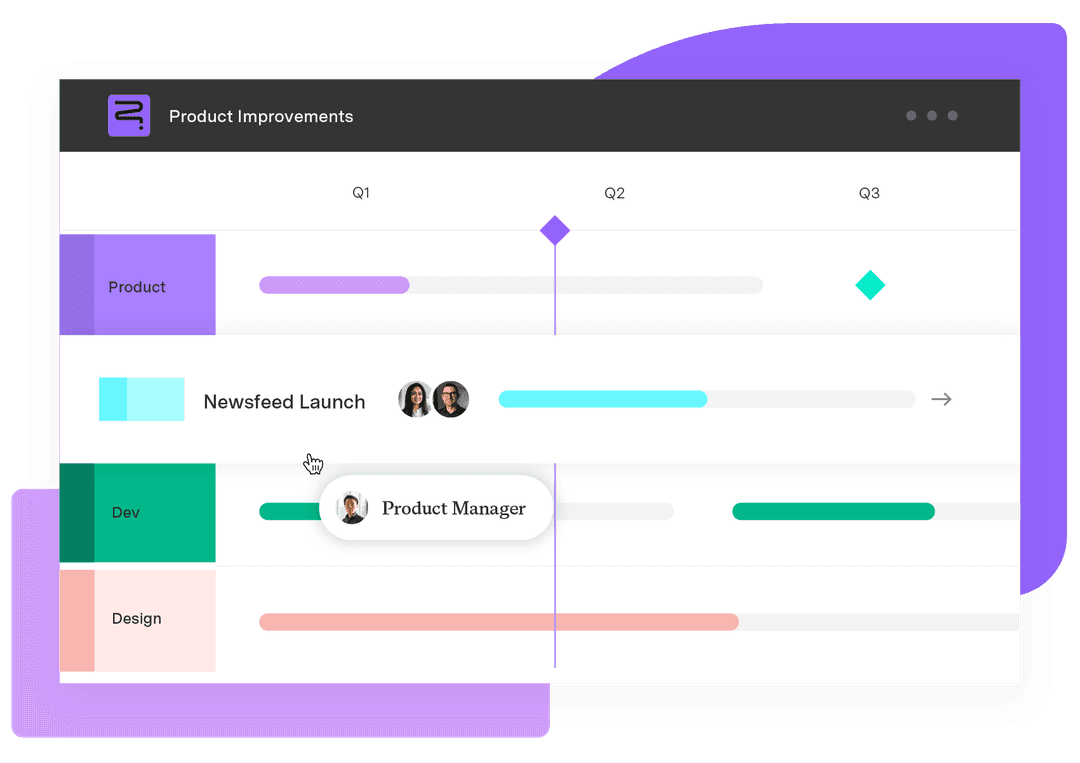Strategy vs. tactics: How to align big picture goals with day-to-day work
Tempo Team
In 2023, New Balance reached a record $6.5 billion in global sales, a 23% increase from the previous year, after a successful strategy broadened the brand’s appeal among Gen Z and Millennials.
New Balance understood the difference between strategy versus tactics. The company’s strategic vision was complemented by tactical planning, including athlete collaborations and localized marketing campaigns. Under CEO Joe Preston’s leadership, it maintained its roots in performance running while courting high-profile partnerships with basketball and tennis stars. These tactics improved the brand’s visibility in markets dominated by competitors.
New Balance’s day-to-day efforts turned its strategic objectives into tangible outcomes, demonstrating the interplay between strategy and tactics. A long-term strategy provides direction, while tactics drive progress toward those goals.
What is strategy?
Strategy is the long-term plan that defines how an organization will achieve its crucial goals and objectives. It provides direction by outlining why the organization is pursuing a goal and what approach it will take to reach it.
A strategy provides a framework for decision-making that helps teams stay focused on outcomes, even as day-to-day priorities shift. An effective and actionable strategy aligns the organization’s mission with its resources and external environment to achieve its key performance indicators (KPIs).
What is an example of a strategy?
A software company might set a strategic goal to become the leading platform for remote collaboration within five years. To support that vision, the company could focus on integrations with other workplace tools. That decision gives the organization a path forward. At the same time, the underlying motivation might be research indicating remote work will continue to grow globally and that users prefer tools that reduce context-switching.
Strategy sets the stage for everything that follows. It helps leaders prioritize initiatives, allocate resources, and measure success against big-picture goals.
What are tactics?
Tactics are the methods for executing a strategy. High-level strategies define the destination and route, whereas tactics deal with the details: Who does what, when, and with which tools?
Examples of tactics include weekly priorities, product features, marketing campaigns, support workflows, or internal processes. For instance, suppose a company’s strategy is to grow market share by improving user experience. A tactical move might involve redesigning the onboarding flow or running usability tests.
Because tactics operate in the short term, they must remain flexible. Teams should adjust tactics as they learn what works. Meanwhile, strategic goals stay constant, guiding those adjustments. Balancing short- and long-term initiatives allows teams to progress without losing sight of the bigger picture.
What’s the difference between strategy and tactics?
Strategy and tactics are tightly connected, but they serve distinct purposes and operate on different levels. Understanding the differences helps teams focus on meaningful progress.
Strategy defines a business’s long-term goals and the route to achieve them. It explains why the company is pursuing a particular objective and identifies its overarching approach. Good strategic planning acts as a compass, remaining stable over time as it guides decision-making across teams.
Conversely, tactics are the specific actions that move a strategy forward. They lay out how the work gets done, usually on a short-term basis. Tactics include launching a product feature or running a targeted ad campaign. Because tactics respond to real-time conditions, they’re more fluid and adjustable.
To break it down:
Strategy is long-term. Tactics are short-term.
Strategy focuses on direction and goals. Tactics focus on execution.
Strategy answers “why” and “what.” Tactics answer “how.”
Strategy changes slowly. Tactics shift as needed.
When leaders clearly define tactical vs. strategic thinking, teams can move forward purposefully, with every action supporting a strategic objective or business goal.
Examples of strategies vs. tactics
The best way to understand how strategy and tactics function is to see them in action. Below are examples from product development, marketing, and customer success:
Product development
Strategy: Reorient app UX and UI to become the market leader in accessibility-focused design within two years.
Tactics:
Conduct accessibility audits on all existing features
Prioritize WCAG-compliant updates in the next product sprint
Partner with accessibility consultants to review designs before release
Roll out a beta program with users who rely on assistive technologies to gather feedback
Here, the strategy defines a long-term position in the market, while the tactics connect that commitment to the day-to-day development cycle.
Marketing
Strategy: Increase brand awareness among small businesses in the U.S. over the next 12 months to drive new partnerships.
Tactics:
Launch a targeted LinkedIn ad campaign aimed at small business owners
Develop a webinar series addressing common operational strategy challenges
Collaborate with niche industry podcasts for guest interviews
Optimize SEO for high-intent keywords relevant to small business tools
The marketing team focuses on one strategic outcome while tailoring short-term actions to different platforms.
Customer success
Strategy: Reduce customer churn by improving onboarding and early engagement.
Tactics:
Create a new onboarding checklist and tutorial flow inside the product
Train customer success managers to flag users with low activity
These tactics target specific moments in the customer journey, driven by the long-term goal of increasing retention.
Connecting strategic thinking with tactical execution in Tempo
Even with a clear strategy, day-to-day execution can be overwhelming. Tempo’s tools help teams connect high-level strategic planning with daily tasks in Jira.
Strategic Roadmaps gives teams a shared view of strategic priorities. They can define goals and map them to timelines in Jira, where the work is already happening. This keeps long-term objectives visible and helps everyone understand how their work contributes to the bigger picture.
Idea Manager helps bridge the gap between strategic planning and action by capturing and organizing input from across the organization. Teams can prioritize and develop ideas in one place, creating a structured path to turn insights into initiatives and, eventually, tactical work items.
Portfolio Manager is ideal for turning plans into action with predictive scheduling, and Structure PPM is the top-rated application for bringing even the most complex strategies to life.
Together, Tempo’s tools maintain alignment across departments and avoid repeat work. Strategy informs the roadmap, and ideas feed into it. Teams use those inputs to decide what to build or improve, sprint by sprint.













































